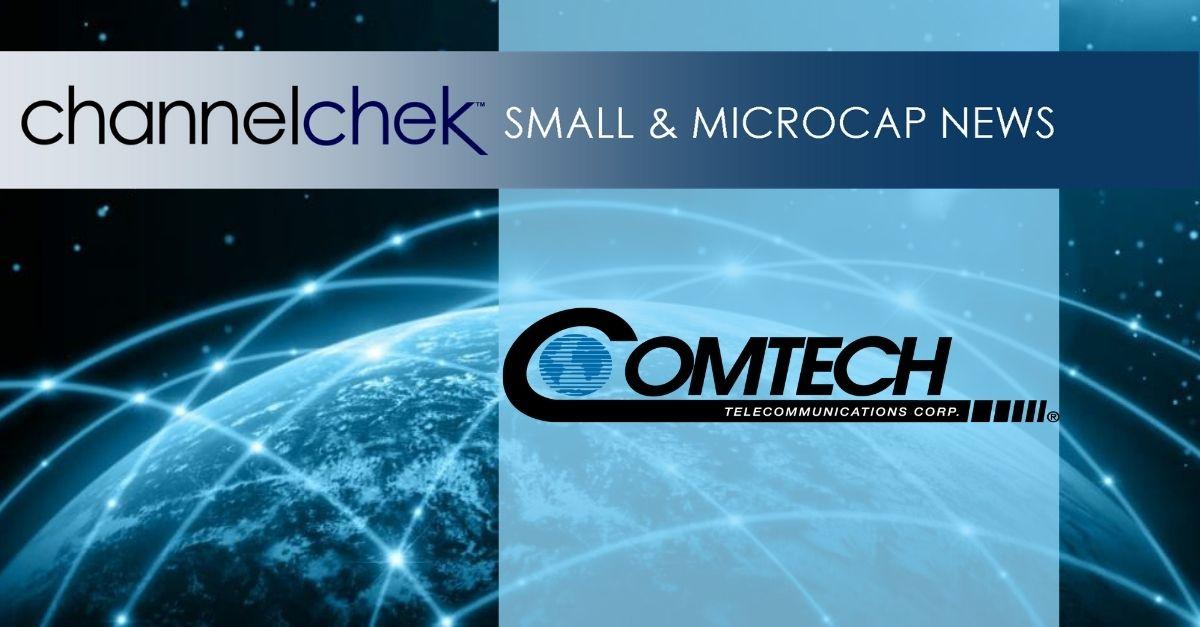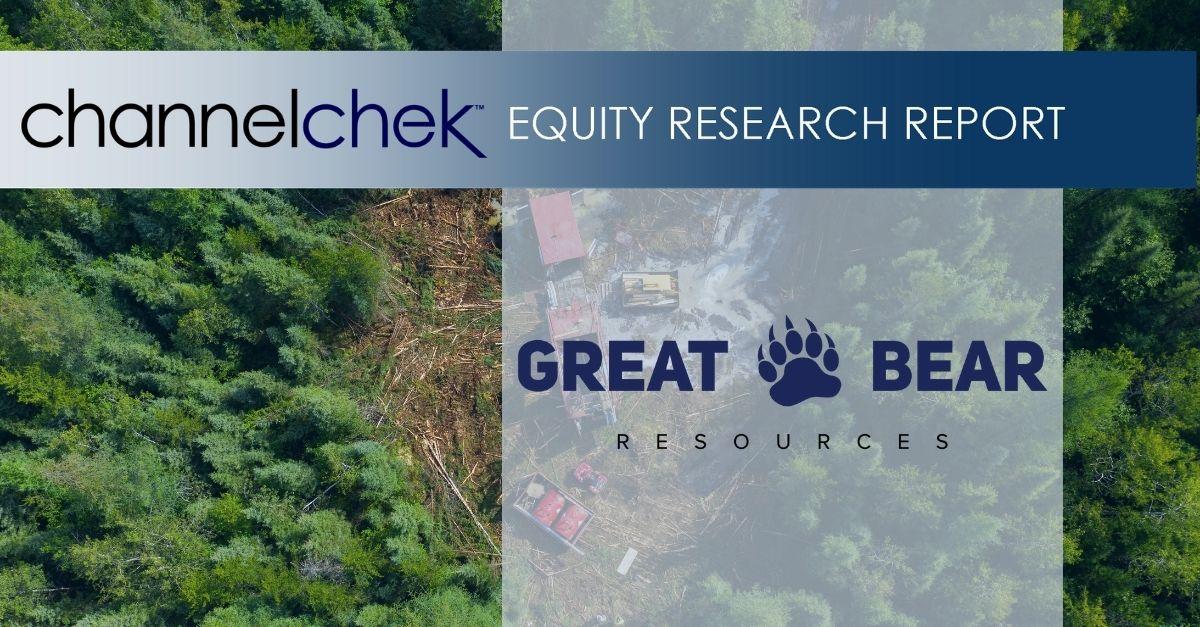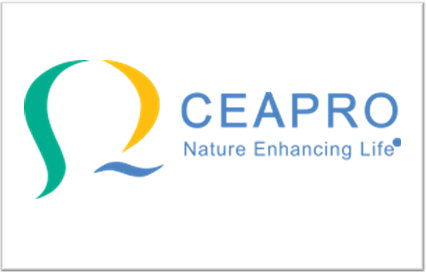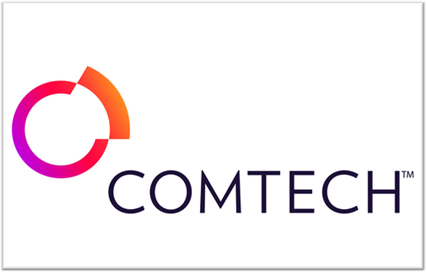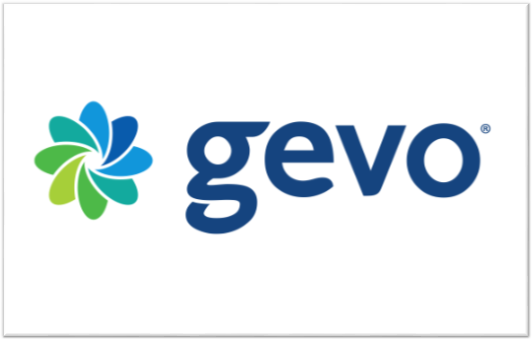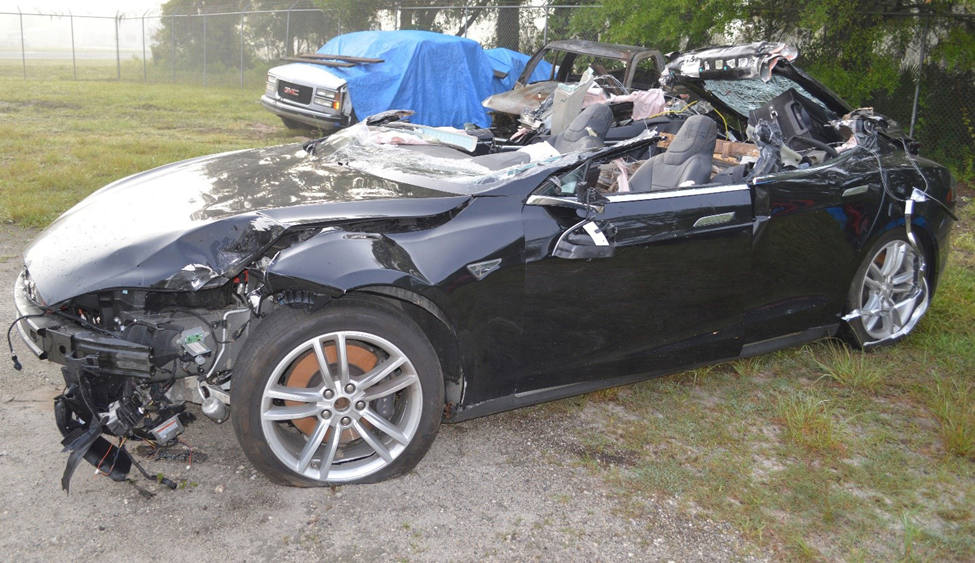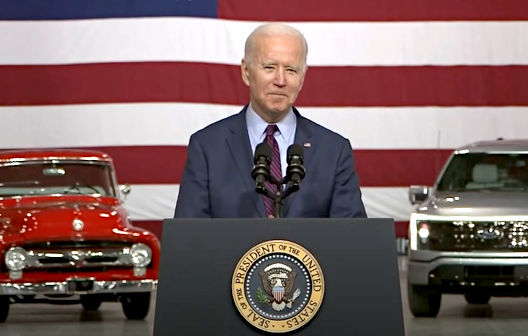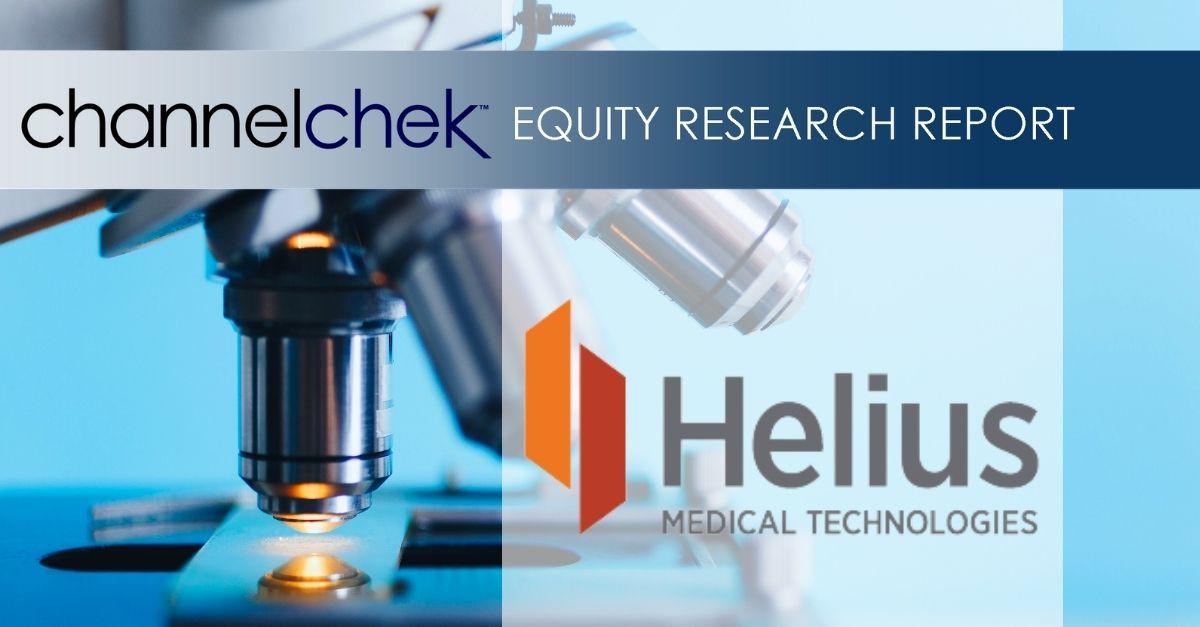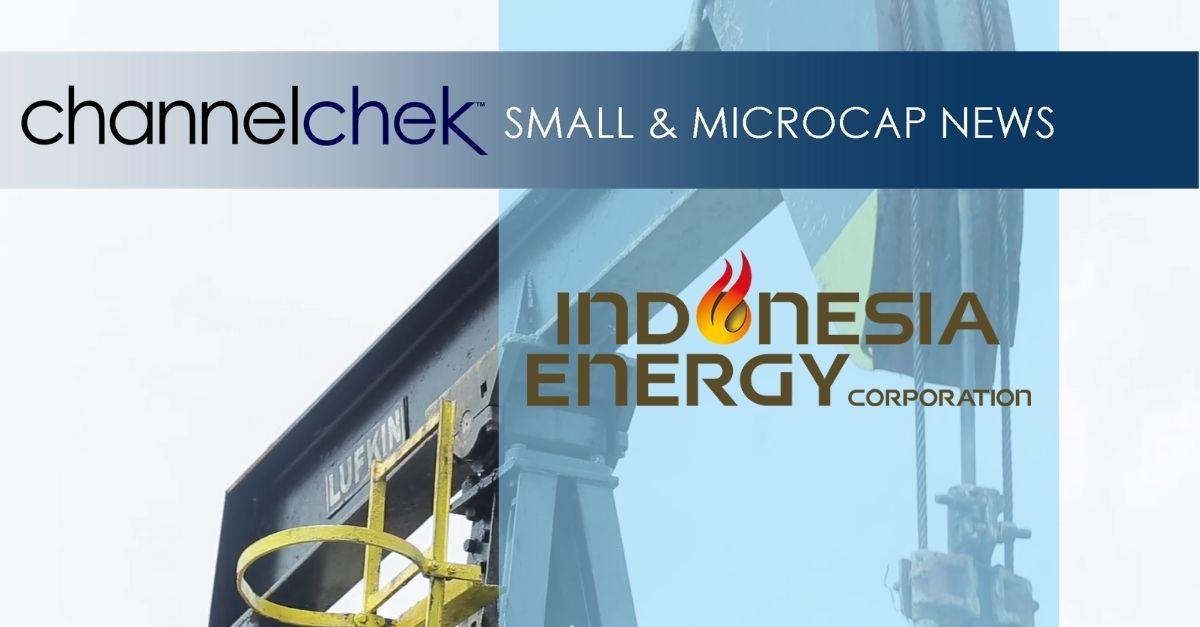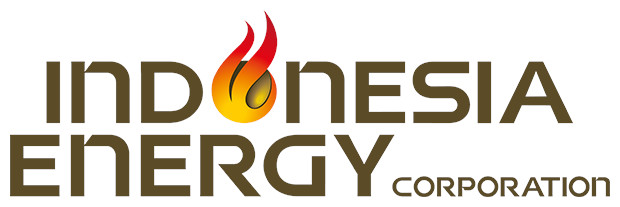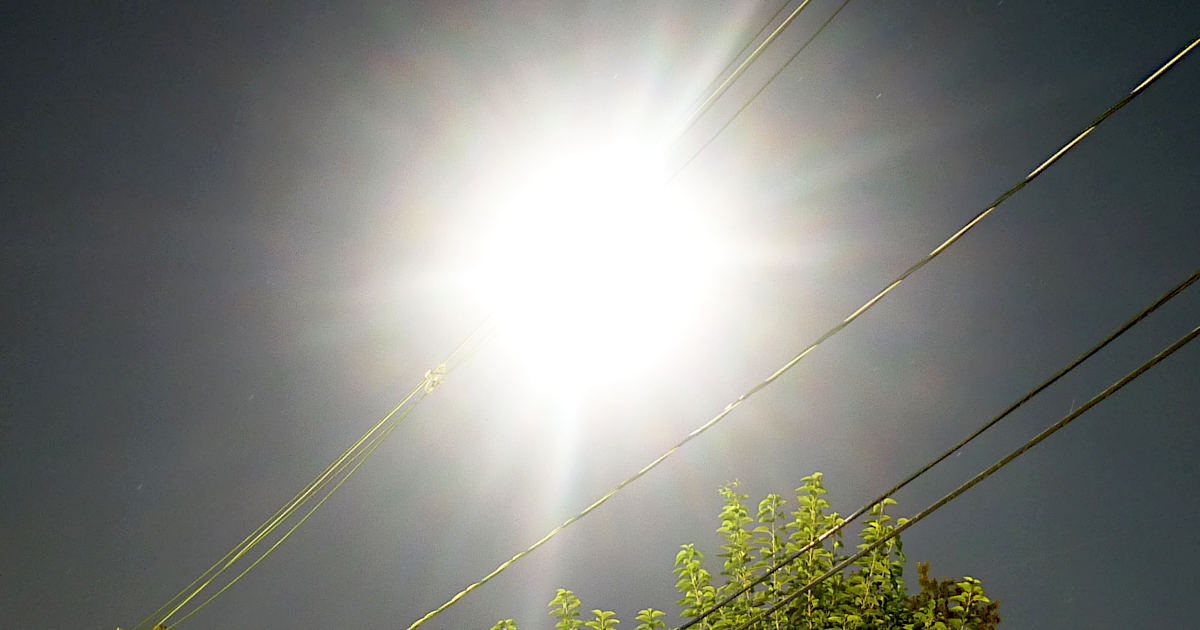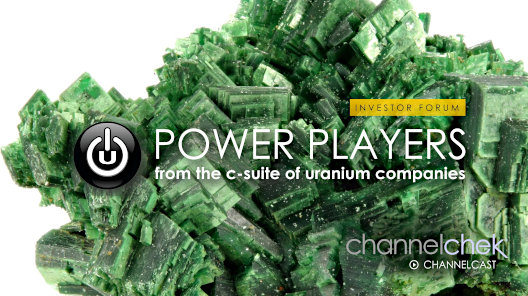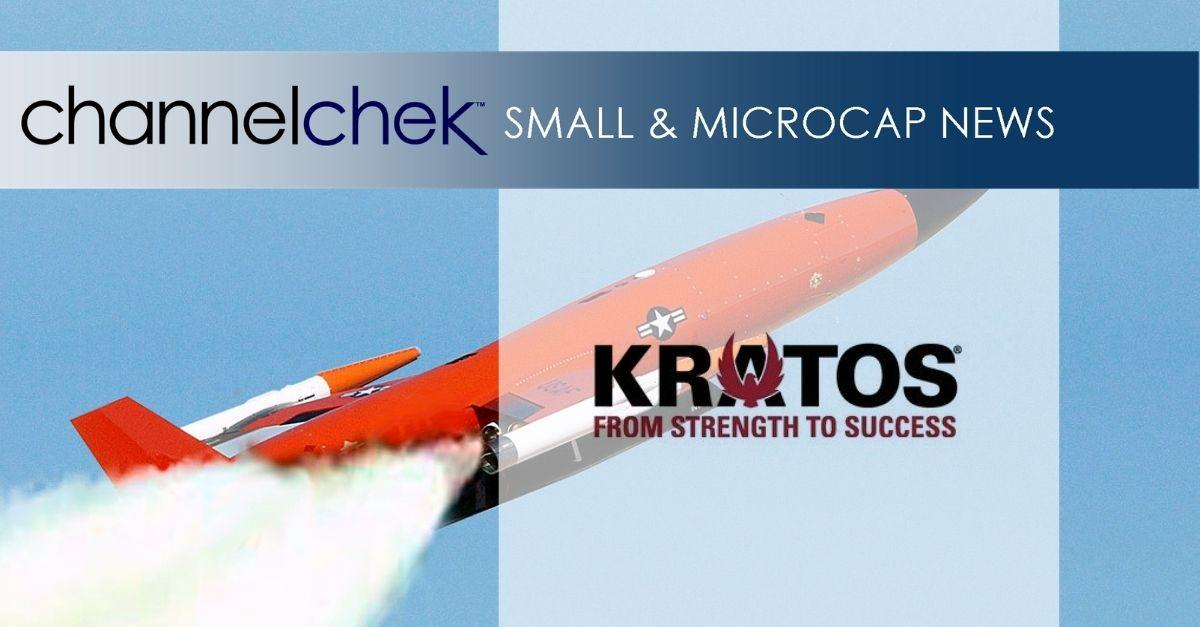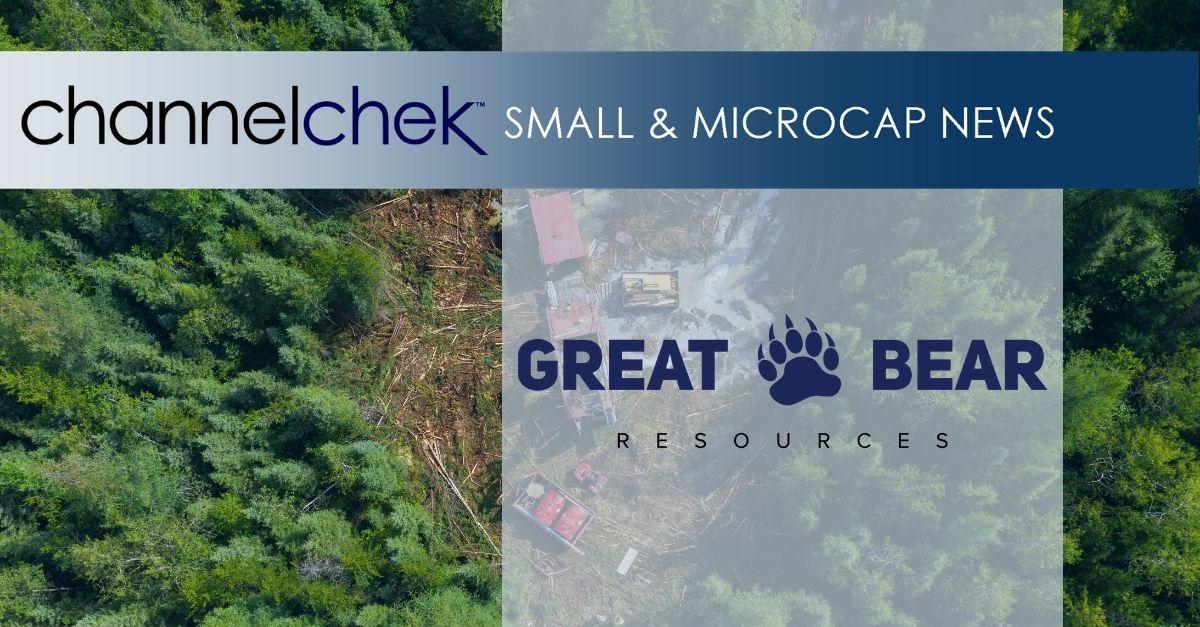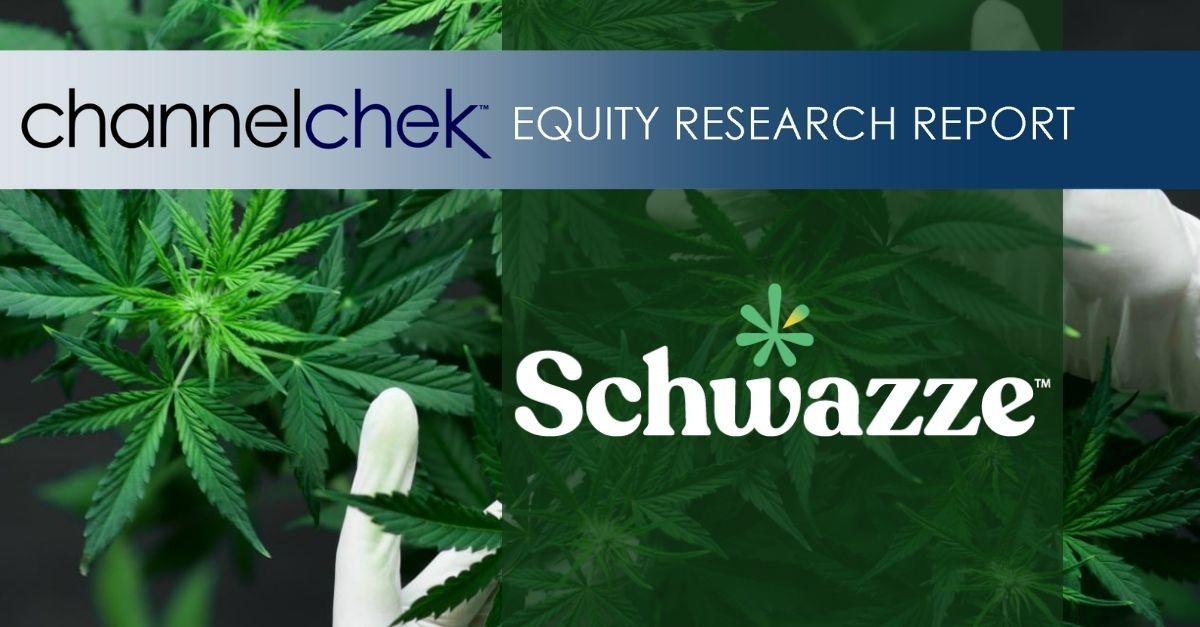
Great Bear Adds to LP Fault Gold Zone at Both Ends of Drill Grid: 28.18 g/t Gold Over 4.80 m, Within 3.83 g/t Gold Over 43.10 m in Northwest, 64.30 g/t Gold Over 0.55 m, Within 5.90 g/t Gold Over 8.25 m in Southeast; Gold Controls Confirmed
August 25, 2021 – Vancouver, British Columbia, Canada – Great Bear Resources Ltd. (the “Company” or “Great Bear”, TSX-V: GBR; OTCQX: GTBAF) today reported results from its ongoing fully funded $45 million 2021 exploration program at its 100% owned flagship Dixie Project in the Red Lake district of Ontario.
Key Results
- Drill holes reported in this release primarily targeted the previously underexplored northwestern and southeastern areas of the 4.2 kilometre Phase 1 drill grid. Results expand and characterize the zone outboard from the Central LP Fault, which had seen the highest density Phase 1 drilling prior to this release. Figure 1.
- High-grade gold controls have been identified along the LP Fault. Drilling has confirmed these controls in several areas, which will facilitate targeting of high-grade gold during Phase 2 drilling below the current 450 metre drill depth, and elsewhere along strike.
- Steeply-plunging high-grade gold mineralization has been successfully targeted in the northwestern “Discovery” and southeastern “Viggo” areas of the LP Fault.
- The number of high-grade gold domains being modeled at the LP Fault has been expanded from 17 to 23. This includes seven high-grade gold domains which are being modeled in the northwestern “Discovery” area.
- Bulk tonnage style gold mineralization has been confirmed as continuous along more than 3 kilometres of strike length of the LP Fault and remains open to extension. New results from the previously under-drilled northwestern “Discovery” and “Gap” areas illustrate this continuity.
Chris Taylor, President and CEO of Great Bear said, “The confirmation of predictable high-grade gold controls within the LP Fault has clear, positive implications for our ability to target and model higher-grade mineralization, especially at depth. However, the confirmation of continuous mineralization at shallow depths in the “Gap” area is arguably the more significant development as we progress towards maiden mineral resource estimate publication by early next year. While clearly not the most strongly mineralized segment of the LP Fault, the “Gap” area contains mineralized intervals with similar grades and widths to those that have been incorporated into mine plans within other Canadian bulk tonnage gold deposits. These new results confirm the strongly mineralized Central and Discovery areas are connected as a continuously mineralized gold zone with clear bulk tonnage potential over three kilometres of strike length.”
With the 73 new drill holes contained in this release, Great Bear has reported 404 of the 440 LP Fault drill holes completed during Phase 1 drilling which will support maiden mineral resource estimation.
Figure 1: Long section showing Phase 1 drill grid results to date and areas discussed in this release.

High-Grade Gold Controls
Recent drilling has included a focus on modeling higher-grade gold mineralization controls within the broad, bulk tonnage style gold system. Plunge controls to mineralization were interpreted using over 65,000 oriented core measurements, targeting the intersections of foliation fabrics and stratigraphy. These intersections frequently host increased widths and grades of gold mineralization.
In this release, Great Bear successfully targeted higher grade zones within the LP Fault in both the “Discovery” and “Viggo” areas, and will apply the same criteria beneath currently drilled areas and along 11 kilometres of strike length of the LP Fault (see news release of February 20, 2020) through 2022.
Examples of confirmed and interpreted plunge controls are included in Figure 1. These and additional interpreted plunge controls will be tested during Phase 2 drilling.
“Discovery” Area Results
Twenty six drill holes were completed in the original LP Fault “Discovery” area, located along the most northwesterly 700 metres of the 4.2 kilometre long Phase 1 drill grid. This area was the site of LP Fault discovery hole DNW-011 (May 28, 2019; 12.33 g/t gold over 14.00 metres). Highlights include:
- Drill hole BR-365 extended gold mineralization approximately 100 metres deeper than past drilling on its section, assaying 15.04 g/t gold over 4.00 metres from 545.00 to 549.00 metres downhole, within a broader envelope of 3.13 g/t gold over 29.50 metres from 523.50 to 553.00 metres downhole. Figure 2.
- Drill hole BR-394 assayed 150.00 g/t gold over 0.80 metres from 331.60 to 332.40 metres downhole, within a broader interval of 28.18 g/t gold over 4.80 metres from 331.60 to 336.40 metres downhole. The total mineralized interval was 3.83 g/t gold over 43.10 metres from 311.50 to 354.60 metres downhole. Figure 3.
- Newly defined steeply northwest plunging high-grade gold controls were successfully confirmed in both BR-365 and BR-394, and will be targeted at depth below this area during Phase 2 drilling.
- Most of the drill holes in the “Discovery” area contained multiple mineralized intervals. An example is drill hole BR-393 which contained four mineralized zones assaying 70.90 g/t gold over 1.00 metre from 110.75 to 111.75 metres, 1.26 g/t gold over 23.00 metres from 209.50 to 232.50 metres downhole, 0.60 g/t gold over 98.35 metres from 237.60 to 335.95 metres downhole, and 16.00 g/t gold over 1.15 metres from 355.25 to 356.40 metres downhole.
- Drill hole BR-360 assayed 22.80 g/t gold over 1.20 metres from bedrock surface, within a broader interval of 1.66 g/t gold over 34.90 metres from 13.20 to 48.10 metres downhole. A separate interval of 0.88 g/t gold over 14.00 metres was also present from 153.00 to 167.00 metres downhole.
- Drill hole BR-333 assayed 26.60 g/t gold over 0.80 metres from 130.30 to 131.10 metres downhole, within a broader interval of 0.71 g/t gold over 84.25 metres from 51.00 to 135.25 metres downhole.
- Great Bear is currently modeling 7 high-grade gold domains within the broader bulk tonnage gold domains in the “Discovery” area of the LP Fault zone. Results are provided in Table 1, and expand both high-grade and bulk-tonnage style gold mineralization in this area.
Table 1: Drill results from the “Discovery” area of the northwestern LP Fault drill grid.
|
Drill Hole
|
|
From (m)
|
To (m)
|
Width* (m)
|
Gold (g/t)
|
Section
|
|
BR-361
|
|
229.40
|
230.00
|
0.60
|
3.01
|
22500
|
|
|
and
|
338.00
|
338.50
|
0.50
|
8.21
|
|
|
|
and
|
461.10
|
484.75
|
23.65
|
1.00
|
|
|
|
including
|
461.10
|
462.40
|
1.30
|
9.81
|
|
|
BR-362
|
|
304.50
|
307.20
|
5.70
|
1.45
|
22500
|
| |
including
|
305.00
|
306.00
|
1.00
|
6.42
|
|
|
BR-363
|
|
137.60
|
154.30
|
16.70
|
1.01
|
22500
|
| |
including
|
149.80
|
151.30
|
1.50
|
7.91
|
|
|
BR-364
|
|
177.90
|
178.65
|
0.75
|
4.51
|
22500
|
|
BR-365
|
|
151.00
|
152.50
|
1.50
|
15.10
|
22425
|
|
|
and
|
523.50
|
553.00
|
29.50
|
3.13
|
|
|
|
including
|
545.00
|
553.00
|
8.00
|
10.24
|
|
|
|
and including
|
545.00
|
549.00
|
4.00
|
15.04
|
|
|
BR-366
|
|
363.00
|
397.50
|
34.50
|
0.89
|
22425
|
|
|
including
|
375.00
|
376.00
|
1.00
|
9.74
|
|
|
BR-368
|
|
189.50
|
207.00
|
17.50
|
1.58
|
22400
|
|
|
including
|
198.50
|
205.10
|
6.60
|
3.82
|
|
|
|
and including
|
204.40
|
205.10
|
0.70
|
22.00
|
|
|
|
and
|
315.25
|
316.75
|
1.50
|
4.19
|
|
|
BR-367
|
|
352.40
|
353.85
|
1.45
|
4.45
|
22375
|
|
|
and
|
372.00
|
373.50
|
1.50
|
3.30
|
|
|
|
and
|
472.40
|
508.30
|
35.90
|
0.71
|
|
|
BR-369
|
|
245.00
|
306.35
|
61.35
|
0.67
|
22325
|
|
BR-420
|
|
315.00
|
358.90
|
43.90
|
1.14
|
22300
|
| |
including
|
331.50
|
333.00
|
1.50
|
6.21
|
|
|
BR-360
|
|
13.20
|
48.10
|
34.90
|
1.66
|
22250
|
|
|
including
|
13.20
|
14.40
|
1.20
|
22.80
|
|
|
|
and
|
153.00
|
167.00
|
14.00
|
0.88
|
|
|
BR-308
|
|
150.60
|
183.00
|
32.40
|
0.96
|
22200
|
|
|
including
|
171.25
|
183.00
|
11.75
|
2.12
|
|
|
|
and including
|
171.25
|
172.00
|
0.75
|
12.50
|
|
|
|
and
|
227.60
|
236.10
|
8.50
|
2.11
|
|
|
|
and
|
286.40
|
356.50
|
70.10
|
0.52
|
|
|
|
and
|
311.80
|
312.75
|
0.95
|
3.30
|
|
|
BR-396
|
|
75.10
|
117.60
|
42.50
|
0.73
|
22200
|
|
|
including
|
101.00
|
107.50
|
6.50
|
2.25
|
|
|
|
and
|
128.20
|
163.25
|
35.05
|
0.74
|
|
|
|
including
|
152.90
|
153.90
|
1.00
|
5.21
|
|
|
BR-307
|
|
353.00
|
419.50
|
66.50
|
0.71
|
22150
|
| |
including
|
380.00
|
382.90
|
2.90
|
2.29
|
|
Table 1 Continued.
|
Drill Hole
|
|
From (m)
|
To (m)
|
Width* (m)
|
Gold (g/t)
|
Section
|
|
BR-397
|
|
20.50
|
50.20
|
29.70
|
0.52
|
22125
|
|
|
and
|
55.40
|
68.70
|
13.30
|
1.31
|
|
|
|
and
|
74.00
|
80.60
|
6.60
|
2.13
|
|
|
|
and
|
83.90
|
123.70
|
39.80
|
0.37
|
|
|
BR-395
|
|
142.00
|
201.30
|
59.30
|
0.40
|
22100
|
|
|
and
|
253.00
|
275.10
|
22.10
|
0.78
|
|
|
|
including
|
260.00
|
261.00
|
1.00
|
7.34
|
|
|
BR-391
|
|
39.00
|
55.90
|
16.90
|
2.55
|
22075
|
|
|
including
|
48.00
|
54.00
|
6.00
|
6.37
|
|
|
|
and
|
60.00
|
101.00
|
41.00
|
0.51
|
|
|
|
including
|
69.00
|
70.50
|
1.50
|
4.09
|
|
|
|
and
|
166.60
|
167.20
|
0.60
|
3.86
|
|
|
BR-392
|
|
197.50
|
233.80
|
36.30
|
0.72
|
22075
|
| |
and
|
253.10
|
256.75
|
3.65
|
2.66
|
|
|
BR-393
|
|
110.75
|
111.75
|
1.00
|
70.90
|
22075
|
|
|
and
|
209.50
|
232.50
|
23.00
|
1.26
|
|
|
|
and
|
237.60
|
335.95
|
98.35
|
0.60
|
|
|
|
and
|
355.25
|
356.40
|
1.15
|
16.00
|
|
|
BR-394
|
|
124.40
|
125.40
|
1.00
|
10.20
|
22075
|
|
|
and
|
311.50
|
354.60
|
43.10
|
3.83
|
|
|
|
and including
|
331.60
|
336.40
|
4.80
|
28.18
|
|
|
|
and including
|
331.60
|
332.40
|
0.80
|
150.00
|
|
|
|
and
|
451.20
|
455.65
|
4.45
|
2.34
|
|
|
BR-333
|
|
51.00
|
135.25
|
84.25
|
0.71
|
21975
|
|
|
and including
|
125.55
|
131.10
|
5.55
|
4.85
|
|
|
|
and including
|
130.30
|
131.10
|
0.80
|
26.60
|
|
|
BR-334
|
|
220.60
|
243.80
|
23.20
|
0.69
|
21950
|
| |
including
|
228.25
|
235.50
|
7.25
|
1.36
|
|
|
BR-335
|
|
180.85
|
182.20
|
1.35
|
3.07
|
21875
|
|
|
and
|
235.50
|
278.75
|
43.25
|
0.54
|
|
|
|
including
|
271.50
|
273.00
|
1.50
|
4.10
|
|
|
BR-336
|
|
334.95
|
344.00
|
9.05
|
0.81
|
21825
|
| |
including
|
338.00
|
344.00
|
6.00
|
1.00
|
|
|
BR-337
|
|
215.25
|
244.10
|
28.85
|
0.34
|
21825
|
|
BR-338
|
|
125.00
|
141.00
|
16.00
|
0.55
|
21825
|
| |
including
|
132.55
|
136.80
|
4.25
|
1.15
|
|
*Represents core length. True mineralization widths range between 65- 95% of reported intervals as they are determined by both structural analyses obtained from oriented drill core data and orientations of individual high grade domains and bulk tonnage domains. Mineralized domains vary in strike between 340 to 270 degrees and dip between 85 to 65 degrees to the north. All drillholes intersect both high grade and bulk tonnage domains and often intersect multiple domains resulting in a range of true widths within the same drillhole.
Figure 2: Cross section 22425, located near the northwestern edge of the Phase 1 drill grid in the “Discovery” area. Drill hole BR-365 extends mineralization by approximately 100 metres vertical depth. Drill core photos are of selected intervals and are not representative of all gold mineralization on the property. Assay results from past drilling are also provided in the included table.

Figure 3: Cross section 22075 located in the northwestern “Discovery” area of the Phase 1 drill grid. Drill core photos are of selected intervals and are not representative of all gold mineralization on the property. Assay results from past drilling are also provided in the included table.

“Gap” Area Results
Eleven drill holes were completed into the “Gap” area, where bulk tonnage style gold mineralization dominates. The Gap segment comprises approximately 400 metres of the Phase 1 grid drilling strike length.
Results are provided in Table 2. Highlights include:
- Confirmation of bulk tonnage style gold mineralization in all areas tested. Results establish continuity between the adjacent “Discovery” and “Central” areas of the LP Fault zone, for a currently drilled total of over three kilometres of continuous bulk tonnage gold mineralization in the near surface of the zone.
- Drill hole BR-410 assayed 23.80 g/t gold over 0.60 metres from 386.10 to 386.70 metres downhole, within a broader interval of 1.29 g/t over 27.50 metres from 367.00 to 394.50 metres downhole.
- Drill hole BR-356 assayed 0.80 g/t gold over 26.90 metres from 124.10 to 151.00 metres downhole.
- Drill hole BR-355 intersected a new high-grade target assaying 31.40 g/t gold over 1.00 metre from 271.50 to 272.50 metres downhole, in addition to a separate interval of 0.59 g/t gold over 31.90 metres from 165.00 to 196.90 metres downhole.
- Great Bear is currently modeling 2 high-grade gold domains within the bulk tonnage gold domains in the Gap area of the LP Fault zone.
- The “Gap” segment of the LP Fault zone has been found to contain more strongly developed gold mineralization at vertical depths of approximately 750 – 800 metres. As originally reported on March 29, 2021, deep drill hole BR-260 intersected 15.57 g/t gold over 3.05 metres, within 1.08 g/t gold over 70.25 metres from 906.15 to 976.40 metres downhole. This remains the deepest drill hole testing the LP Fault to date.
Table 2: Drill results from the “Gap” area of the Northwestern LP Fault drill grid.
|
Drill Hole
|
|
From (m)
|
To (m)
|
Width* (m)
|
Gold (g/t)
|
Section
|
|
BR-350
|
|
138.00
|
187.50
|
49.50
|
0.40
|
21650
|
| |
including
|
144.00
|
171.00
|
27.00
|
0.50
|
|
|
BR-351
|
|
97.00
|
105.00
|
8.00
|
0.43
|
21600
|
|
BR-352
|
|
66.00
|
80.75
|
14.75
|
0.65
|
21525
|
|
|
and
|
116.30
|
129.00
|
12.70
|
0.51
|
|
|
|
and
|
133.85
|
138.10
|
4.25
|
2.76
|
|
|
|
and
|
144.50
|
145.50
|
1.00
|
4.36
|
|
|
BR-353
|
|
231.50
|
271.70
|
40.20
|
0.52
|
21525
|
| |
including
|
241.70
|
243.30
|
1.60
|
5.96
|
|
|
BR-354
|
|
235.10
|
236.60
|
1.50
|
3.20
|
21525
|
| |
and
|
256.80
|
324.10
|
67.30
|
0.31
|
|
|
BR-355
|
|
165.00
|
196.90
|
31.90
|
0.59
|
21450
|
| |
and
|
271.50
|
272.50
|
1.00
|
31.40
|
|
|
BR-356
|
|
118.20
|
155.00
|
36.80
|
0.67
|
21450
|
|
|
and
|
170.55
|
174.00
|
3.45
|
2.36
|
|
|
|
including
|
170.55
|
171.00
|
0.45
|
8.35
|
|
|
BR-357
|
Anomalous
|
|
|
|
|
21425
|
|
BR-358
|
|
85.10
|
131.00
|
45.90
|
0.50
|
21400
|
| |
and
|
192.70
|
193.55
|
0.85
|
6.96
|
|
|
BR-359
|
|
203.75
|
253.00
|
49.25
|
0.31
|
21400
|
|
BR-410
|
|
190.80
|
191.80
|
1.00
|
3.73
|
21325
|
|
|
and
|
295.50
|
361.90
|
66.40
|
0.32
|
|
|
|
and
|
367.00
|
394.50
|
27.50
|
1.29
|
|
|
|
and including
|
386.10
|
386.70
|
0.60
|
23.80
|
|
*Represents core length. True mineralization widths range between 65- 95% of reported intervals as they are determined by both structural analyses obtained from oriented drill core data and orientations of individual high grade domains and bulk tonnage domains. Mineralized domains vary in strike between 340 to 270 degrees and dip between 85 to 65 degrees to the north. All drillholes intersect both high grade and bulk tonnage domains and often intersect multiple domains resulting in a range of true widths within the same drillhole.
“Viggo” Area Results
The most southeasterly kilometre is the least explored section of the Phase 1 drill grid, and is referred to as the “Viggo” area (October 30, 2019).
Gold mineralization in the “Viggo” area is transitional between the disseminated, bulk tonnage style gold of the central LP Fault in the west, and mesothermal vein-hosted gold with significant mineralized plunges or “shoots” in the east, such as is observed at the adjacent Hinge zone on the Dixie property, and elsewhere in the Red Lake district. An example of this mineralization is shown in Figure 4.
All (100%) of twenty new drill holes successfully intersected gold mineralization, including newly predicted high-grade gold plunges, which are the main exploration targets in this area. Gold results and structural data collected from this drilling will be used to target additional high-grade gold plunges during Phase 2 drilling.
New results are provided in Table 3 and include:
- Drill hole BR-343 intersected the near-surface projection of a high-grade plunge assaying 21.70 g/t gold over 1.25 metres from 27.50 to 28.75 metres downhole, within a broader interval of 6.73 g/t gold over 5.50 metres from 27.50 to 33.00 metres downhole. Follow-up drilling down plunge from this discovery is now required.
- Eight hundred fifty metres along strike to the southeast, drill hole BR-371 intersected the at-depth projection of a separate high-grade plunge assaying 64.30 g/t gold over 0.55 metres from 334.75 to 335.30 metres downhole, within a broader interval of 5.90 g/t gold over 8.25 metres from 334.75 to 343.00 metres downhole.
- BR-371 is the down-plunge continuation of gold mineralization first intersected in drill hole BR-057 (February 13, 2020), which assayed 38.03 g/t gold over 0.50 metres, within a broader interval of 7.35 g/t gold over 3.50 metres. Additional up- and down-plunge drilling of this discovery is now required.
- Many of the drill holes in the Viggo area contain multiple gold-bearing vein-like intervals which define priority targets for follow-up drilling. Great Bear will test for potential structurally thickened plunging zones like those observed in BR-343 and BR-371 in these areas. An example from this release is drill hole BR-343 which intersected three mineralized vein-like intervals assaying 6.14 g/t gold over 0.50 metres from 34.05 to 34.55 metres downhole, 6.61 g/t gold over 0.95 metres from 79.85 to 80.80 metres downhole, and 10.20 g/t gold over 0.55 metres from 174.10 to 174.65 metres downhole.
- Other drilling in this area targeted shallow bulk-tonnage style gold mineralization immediately east of the central LP Fault zone, which will inform ongoing resource modeling. New results include BR-341 which assayed 2.66 g/t gold over 20.90 metres from 61.50 to 82.40 metres downhole.
- Drill density is currently limited in the Viggo area. Additional drilling will be required during the Phase 2 program to further define the bulk tonnage style and high-grade gold in this area, and to explore for additional vein-like high-grade gold plunges.
Figure 4: Cross section 18750 located in the southeastern “Viggo” area of the Phase 1 drill grid. The mineralized zone intersected in BR-371 and BR-057 plunges towards the west, into this view. Drill core photos are of selected intervals and are not representative of all gold mineralization on the property. Assay results from past drilling are also provided in the included table.

Table 3: Drill results from the southeastern “Viggo” area.
|
Drill Hole
|
|
From (m)
|
To (m)
|
Width* (m)
|
Gold (g/t)
|
Section
|
|
BR-341
|
|
49.10
|
57.00
|
7.90
|
2.57
|
19750
|
|
|
including
|
52.50
|
57.00
|
4.50
|
4.26
|
|
|
|
and
|
61.50
|
82.40
|
20.90
|
2.66
|
|
|
BR-342
|
|
34.05
|
34.55
|
0.50
|
6.14
|
19700
|
|
|
and
|
79.85
|
80.80
|
0.95
|
6.61
|
|
|
|
and
|
174.10
|
174.65
|
0.55
|
10.20
|
|
|
BR-403
|
|
166.55
|
174.00
|
7.45
|
1.25
|
19700
|
|
|
including
|
173.25
|
174.00
|
0.75
|
9.38
|
|
|
|
and
|
302.95
|
311.50
|
8.55
|
0.41
|
|
|
BR-404
|
|
193.10
|
204.00
|
10.90
|
0.27
|
19700
|
|
|
and
|
212.00
|
223.50
|
11.50
|
0.18
|
|
|
|
and
|
256.80
|
276.70
|
19.90
|
0.55
|
|
|
|
including
|
270.00
|
270.70
|
0.70
|
3.31
|
|
|
BR-344
|
|
38.65
|
39.15
|
0.50
|
2.73
|
19675
|
|
|
and
|
173.60
|
185.25
|
11.65
|
0.30
|
|
|
|
and
|
215.65
|
220.35
|
4.70
|
0.28
|
|
|
BR-343
|
|
27.50
|
33.00
|
5.50
|
6.73
|
19625
|
|
|
including
|
27.50
|
28.75
|
1.25
|
21.70
|
|
|
|
and
|
155.00
|
156.00
|
1.00
|
4.61
|
|
|
BR-401
|
|
285.45
|
286.35
|
0.90
|
7.15
|
19600
|
|
BR-400
|
|
217.50
|
218.00
|
0.50
|
3.28
|
19575
|
|
BR-347
|
|
108.10
|
115.10
|
7.00
|
0.71
|
19525
|
|
BR-349
|
|
170.50
|
171.50
|
1.00
|
6.57
|
19500
|
|
BR-402
|
|
256.10
|
257.10
|
1.00
|
4.07
|
19475
|
| |
and
|
269.70
|
270.20
|
0.50
|
4.51
|
|
|
BR-348
|
|
91.15
|
102.00
|
10.85
|
0.42
|
19450
|
|
BR-377
|
|
259.50
|
267.00
|
7.50
|
1.97
|
19050
|
| |
including
|
261.00
|
261.60
|
0.60
|
16.10
|
|
|
BR-375
|
|
436.00
|
445.55
|
9.55
|
0.28
|
19000
|
|
BR-376A
|
|
354.25
|
357.10
|
2.85
|
2.00
|
18975
|
|
BR-373
|
|
471.60
|
472.70
|
1.10
|
3.32
|
18925
|
| |
and
|
480.00
|
482.50
|
2.50
|
2.57
|
|
|
BR-370
|
|
282.35
|
283.60
|
1.25
|
11.85
|
18900
|
|
|
and
|
289.50
|
298.00
|
8.50
|
1.22
|
|
|
|
and including
|
289.50
|
290.25
|
0.75
|
9.19
|
|
|
BR-372
|
|
351.60
|
360.00
|
8.40
|
0.72
|
18850
|
|
|
including
|
351.90
|
352.80
|
0.90
|
3.53
|
|
|
|
and
|
367.55
|
368.05
|
0.50
|
11.30
|
|
|
BR-374
|
|
488.85
|
493.30
|
4.45
|
1.73
|
18850
|
| |
including
|
489.70
|
490.30
|
0.60
|
8.90
|
|
|
BR-371
|
|
334.75
|
343.00
|
8.25
|
5.90
|
18775
|
| |
including
|
334.75
|
335.30
|
0.55
|
64.30
|
|
*Represents core length. True mineralization widths range between 65- 95% of reported intervals as they are determined by both structural analyses obtained from oriented drill core data and orientations of individual high grade domains and bulk tonnage domains. Mineralized domains vary in strike between 340 to 270 degrees and dip between 85 to 65 degrees to the north. All drillholes intersect both high grade and bulk tonnage domains and often intersect multiple domains resulting in a range of true widths within the same drillhole.
Additional Drilling Peripheral to the LP Fault Zone
Fifteen of the 440 Phase 1 LP Fault drill holes were completed outside of the primary drill grid, up to 200 metres to the south of the zone at various locations along its strike length. Results for these holes are available on the Company ‘s web site at www.greatbearresources.ca. This drilling was undertaken to assess:
- The lateral extent of gold mineralization into the footwall of the LP Fault Zone host rocks,
- Geotechnical considerations such as rock density, competency and geochemistry that will be integrated into resource modeling, and
- Condemnation drilling that will be integrated into advanced project planning.
Bulk disseminated gold mineralization at the LP Fault generally lacks discrete boundaries and decreases in intensity with increasing distance from the centre of the zone. As such, despite not targeting the LP Fault zone, all 15 (100%) of the drill holes completed into the periphery of the system still contained anomalous to low-grade gold over various interval widths.
Examples include peripheral drill holes BR-329a which intersected 0.22 g/t gold over 12.30 metres from 64.90 to 77.20 metres downhole, BR-345 which intersected 0.18 g/t gold over 16.35 metres from 21.60 to 37.95 metres downhole, and BR-405 which intersected 0.14 g/t gold over 14.10 metres from 40.90 to 55.00 metres downhole.
Peripheral drill hole BR-380 intersected high-grade gold assaying 23.50 g/t gold over 0.50 metres from 16.55 to 17.05 metres at bedrock surface. While the hole was drilled away from system, it was collared in the footwall of high-grade zone BR7 (May 19, 2021), and hence intersected a portion of the high-grade domain prior to exiting the system.
On a go-forward basis, drill holes completed outside the LP Fault and other gold zones will be included in a separate table in the data download section of Great Bear’s website. All LP Fault drill hole highlighted assays, plus drill collar locations and orientations can be downloaded at the Company’s web site.
Drill collar location, azimuth and dip for drill holes targeting the LP Fault zone included in this release are provided in the table below (UTM zone 15N, NAD 83):
|
Hole ID
|
Easting
|
Northing
|
Elevation
|
Length
|
Dip
|
Azimuth
|
|
BR-307
|
455817
|
5635200
|
375
|
519
|
-57
|
227
|
|
BR-308
|
455740
|
5635191
|
376
|
493
|
-60
|
227
|
|
BR-333
|
455801
|
5634900
|
373
|
282
|
-62
|
222
|
|
BR-334
|
455901
|
5634950
|
373
|
385
|
-56
|
222
|
|
BR-335
|
455955
|
5634906
|
372
|
327
|
-60
|
223
|
|
BR-336
|
456017
|
5634922
|
372
|
429
|
-60
|
221
|
|
BR-337
|
455974
|
5634868
|
372
|
345
|
-58
|
223
|
|
BR-338
|
455923
|
5634828
|
372
|
342
|
-59
|
214
|
|
BR-341
|
457797
|
5633930
|
364
|
435
|
-56
|
209
|
|
BR-342
|
457807
|
5633855
|
365
|
357
|
-55
|
208
|
|
BR-343
|
457873
|
5633787
|
363
|
327
|
-55
|
207
|
|
BR-344
|
457825
|
5633807
|
364
|
237
|
-55
|
209
|
|
BR-347
|
457955
|
5633730
|
362
|
330
|
-55
|
210
|
|
BR-348
|
458027
|
5633717
|
361
|
258
|
-55
|
211
|
|
BR-349
|
458012
|
5633799
|
368
|
378
|
-55
|
210
|
|
BR-350
|
455977
|
5634606
|
369
|
394
|
-49
|
39
|
|
BR-351
|
456027
|
5634582
|
369
|
426
|
-49
|
39
|
|
BR-352
|
456104
|
5634532
|
364
|
506
|
-52
|
37
|
|
BR-353
|
456076
|
5634490
|
365
|
473
|
-49
|
40
|
|
BR-354
|
456033
|
5634433
|
369
|
594
|
-48
|
39
|
|
BR-355
|
456106
|
5634447
|
358
|
561
|
-47
|
39
|
|
BR-356
|
456133
|
5634459
|
364
|
336
|
-44
|
38
|
|
BR-357
|
456203
|
5634502
|
363
|
231
|
-47
|
36
|
|
BR-358
|
456192
|
5634448
|
363
|
330
|
-50
|
37
|
|
BR-359
|
456149
|
5634403
|
367
|
594
|
-48
|
37
|
|
BR-360
|
455595
|
5635046
|
376
|
204
|
-61
|
227
|
|
BR-361
|
455585
|
5635497
|
383
|
582
|
-58
|
225
|
|
BR-362
|
455531
|
5635440
|
385
|
510
|
-59
|
224
|
|
BR-363
|
455489
|
5635381
|
384
|
345
|
-58
|
225
|
|
BR-364
|
455451
|
5635336
|
384
|
343
|
-58
|
225
|
|
BR-365
|
455726
|
5635551
|
382
|
723
|
-57
|
225
|
|
BR-366
|
455637
|
5635459
|
381
|
618
|
-58
|
223
|
|
BR-367
|
455687
|
5635426
|
379
|
579
|
-58
|
227
|
|
BR-368
|
455578
|
5635311
|
380
|
380
|
-63
|
226
|
|
BR-369
|
455656
|
5635260
|
378
|
387
|
-55
|
227
|
|
BR-370
|
458631
|
5633678
|
357
|
435
|
-56
|
210
|
|
BR-371
|
458787
|
5633652
|
358
|
453
|
-55
|
210
|
|
BR-372
|
458727
|
5633695
|
359
|
473
|
-55
|
212
|
|
BR-373
|
458723
|
5633841
|
360
|
609
|
-54
|
216
|
|
BR-374
|
458766
|
5633800
|
357
|
617
|
-56
|
213
|
|
BR-375
|
458620
|
5633844
|
360
|
570
|
-56
|
214
|
|
BR-376A
|
458583
|
5633766
|
358
|
489
|
-55
|
212
|
|
BR-377
|
458494
|
5633710
|
360
|
399
|
-55
|
211
|
|
BR-391
|
455720
|
5634953
|
376
|
303
|
-61
|
223
|
|
BR-392
|
455775
|
5635011
|
376
|
378
|
-61
|
224
|
|
BR-393
|
455818
|
5635062
|
374
|
465
|
-61
|
226
|
|
BR-394
|
455847
|
5635114
|
375
|
513
|
-62
|
222
|
|
BR-395
|
455751
|
5635052
|
374
|
390
|
-62
|
225
|
|
BR-396
|
455660
|
5635081
|
376
|
312
|
-61
|
227
|
|
BR-397
|
455679
|
5634990
|
375
|
306
|
-61
|
226
|
|
BR-400
|
457965
|
5633859
|
368
|
354
|
-55
|
211
|
|
BR-401
|
457961
|
5633926
|
369
|
420
|
-55
|
209
|
|
BR-402
|
458068
|
5633865
|
366
|
411
|
-55
|
208
|
|
BR-403
|
457857
|
5633935
|
364
|
450
|
-55
|
211
|
|
BR-404
|
457902
|
5634015
|
364
|
480
|
-54
|
209
|
|
BR-410
|
456193
|
5634289
|
369
|
678
|
-47
|
35
|
|
BR-420
|
455687
|
5635281
|
377
|
435
|
-57
|
229
|
About the Dixie Project
The 100% owned flagship Dixie project boasts one of the largest recent gold discoveries in a Canadian mining jurisdiction. Proximal to major infrastructure near the town of Red Lake, Ontario, the Dixie property comprises over 91.4 square kilometres of contiguous claims that extend over 22 kilometres with a paved highway and provincial power and natural gas lines. The property also hosts a network of well-maintained logging roads which facilitate access.
To date, Great Bear has completed a total of 630 drill holes (283,000 metres), identifying three high-grade gold discoveries. The most significant discovery is the large-scale “LP Fault” zone, which comprises high-grade disseminated gold mineralization within broad moderate-to-lower-grade envelopes in felsic volcanic and sediment units. LP Fault drilling has identified gold mineralization along 11 kilometres of strike length to date, and a detailed drill grid is being completed along approximately 4 kilometres of strike length. The nearby “Hinge” and “Limb” gold zones are more characteristic of the renowned Red Lake mined deposits, comprising gold-bearing quartz veins and silica-sulphide replacement zones hosted by mafic volcanic units. Over 80% of the Company’s drill holes into the LP Fault, Dixie Limb and Hinge zones contain visible gold mineralization. Gold occurs mainly as free gold, neither bound to nor within sulphide minerals.
Great Bear adheres to industry-leading quality assurance / quality control (QA/QC) practices in data collection, analysis and disclosure, and detailed assays including all historical LP Fault drill hole data are available on the Company’s website at https://greatbearresources.ca/projects/overview/dixie-project-data/.
About Great Bear
Great Bear Resources Ltd. is a Vancouver-based gold exploration company focused on advancing its 100% owned Dixie project in Northwestern Ontario, Canada. A significant exploration drill program is currently underway to define the mineralization within a large-scale, high-grade disseminated gold discovery made in 2019, the LP Fault. Additional exploration drilling is also in progress to expand and infill nearby high-grade gold zones, as well as to test new regional targets. The Company is currently in the process of compiling all historical data together with incoming assay results, with the goal of publishing an initial NI 43-101 compliant multi-million ounce mineral resource estimate for the Dixie project in early 2022.
Great Bear is a committed partner to all stakeholders, with a long-term vision of sustainable exploration to advance the Dixie project in a manner that demonstrates good stewardship of land, operational excellence and accountability.
QA/QC and Core Sampling Protocols
Drill core is logged and sampled in a secure core storage facility located in Red Lake Ontario. Core samples from the program are cut in half, using a diamond cutting saw, and are sent to Activation Laboratories in Ontario, an accredited mineral analysis laboratory, for analysis. All samples are analysed for gold using standard Fire Assay-AA techniques. Samples returning over 10.0 g/t gold are analysed utilizing standard Fire Assay-Gravimetric methods. Pulps from approximately 5% of the gold mineralized samples are submitted for check analysis to a second lab. Selected samples are also chosen for duplicate assay from the coarse reject of the original sample. Selected samples with visible gold are also analyzed with a standard 1 kg metallic screen fire assay. Certified gold reference standards, blanks and field duplicates are routinely inserted into the sample stream, as part of Great Bear’s quality control/quality assurance program (QAQC). No QAQC issues were noted with the results reported herein.
Qualified Person and NI 43-101 Disclosure
Mr. R. Bob Singh, P.Geo, VP Exploration, and Ms. Andrea Diakow P.Geo, VP Projects for Great Bear are the Qualified Persons as defined by National Instrument 43-101 responsible for the accuracy of technical information contained in this news release.
ON BEHALF OF THE BOARD
“Chris Taylor”
Chris Taylor, President and CEO
Investor Inquiries:
Ms. Jenni Piette,
Director, Sustainability and Stakeholder Relations
Tel: 604-646-8354
info@greatbearresources.ca
www.greatbearresources.ca
Cautionary note regarding forward-looking statements
This release contains certain “forward looking statements” and certain “forward-looking information” as defined under applicable Canadian and U.S. securities laws. Forward-looking statements and information can generally be identified by the use of forward-looking terminology such as “may”, “will”, “should”, “expect”, “intend”, “estimate”, “anticipate”, “believe”, “continue”, “plans” or similar terminology. The forward-looking information contained herein is provided for the purpose of assisting readers in understanding management’s current expectations and plans relating to the future. Readers are cautioned that such information may not be appropriate for other purposes.
Forward-looking information are based on management of the parties’ reasonable assumptions, estimates, expectations, analyses and opinions, which are based on such management’s experience and perception of trends, current conditions and expected developments, and other factors that management believes are relevant and reasonable in the circumstances, but which may prove to be incorrect.
Such factors, among other things, include: impacts arising from the global disruption caused by the Covid-19 coronavirus outbreak, business integration risks; fluctuations in general macroeconomic conditions; fluctuations in securities markets; fluctuations in spot and forward prices of gold or certain other commodities; change in national and local government, legislation, taxation, controls, regulations and political or economic developments; risks and hazards associated with the business of mineral exploration, development and mining (including environmental hazards, industrial accidents, unusual or unexpected formations pressures, cave-ins and flooding); discrepancies between actual and estimated metallurgical recoveries; inability to obtain adequate insurance to cover risks and hazards; the presence of laws and regulations that may impose restrictions on mining; employee relations; relationships with and claims by local communities and indigenous populations; availability of increasing costs associated with mining inputs and labour; the speculative nature of mineral exploration and development (including the risks of obtaining necessary licenses, permits and approvals from government authorities); and title to properties.
Great Bear undertakes no obligation to update forward-looking information except as required by applicable law. Such forward-looking information represents management’s best judgment based on information currently available. No forward-looking statement can be guaranteed and actual future results may vary materially. Accordingly, readers are advised not to place undue reliance on forward-looking statements or information.

